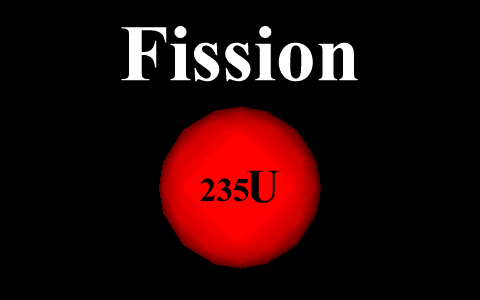 The Two Cultures
The Two CulturesNavigating the site:
Charles Percy Snow, The TWO Cultures, 1956
First published, The Two Cultures, The New Statesman, October, 1956. C. P. Snow
Sir Charles Percy Snow had worked on the British atomic bomb project during the Second World War, and was primarily a novelist who wrote international intrigue books and was active in the London publishing circles.
The Fiftieth Anniversary, of the publication is 2006.
His words | Snow's essay interpreted | The Two Culture's context | The Redux Essay | Siry essay
- I , Two Cultures
- II, Intellectuals as Natural Luddites
- III, The Scientific Revolution
- IV, Rich and Poor
Related ideas
- The distrust that segregates elite thinkers from perpetrators.
- The distortion among elites leads to a more profound threat.
- Industrial Technology
- Technology and its relation to science
- Technology
- Science
- Technical, or socio-technic challenges to tectonic changes
- Accelerating change
- Recovery of wisdom
information | Atomic bomb | Two Cultures | Intellectuals | Scientific Revolution | Rich & Poor
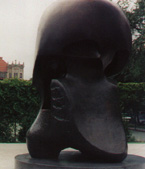 The Atomic bomb:
The Atomic bomb:
This sculpture, marks the place at the University of Chicago where Enrico Fermi and other physicists conducted the first experimental nuclear chain reaction by the fission of uranium. This occurred on December 2, 1942, beneath the University stadium in a squash court. The experiment was the start of the process to build an 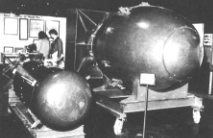 explosive device to use in the war against Nazi Germany. It was not until June, 1945, however, after the German surrender (April) that the U.S. and British allies had been able to construct two bombs--the larger made from uranium and the less massive one of plutonium; whose nicknames where "fat man," and "little boy." The bomb on the right, "fat man" was dropped on August 3, 1945, on the Japanese inhabitants of Hiroshima. To its left, "little boy" was used to target Nagasaki on August 9, 1945, where also there happened to be a POW camp for American soldiers who were prisoners of war and held in Japan.
explosive device to use in the war against Nazi Germany. It was not until June, 1945, however, after the German surrender (April) that the U.S. and British allies had been able to construct two bombs--the larger made from uranium and the less massive one of plutonium; whose nicknames where "fat man," and "little boy." The bomb on the right, "fat man" was dropped on August 3, 1945, on the Japanese inhabitants of Hiroshima. To its left, "little boy" was used to target Nagasaki on August 9, 1945, where also there happened to be a POW camp for American soldiers who were prisoners of war and held in Japan.
Explosive power was hypothesized to lay dormant in the disintegration of larger atoms, a process labeled "fission" by Lise Meitner because it resembled what bacteria do when they reproduce-- they split into two smaller creatures. In the case of Uranium fission, a slow neutron causes and instability in certain U-235 isotopes and the unstable nuclei splits or fissions into barium and thorium. That was initially seen in a German University laboratory in 1939 when Hahn and Strassman, Meitner's colleagues succeeded in splitting the U-235 isotope.
U.S. National Security Archive
information | Atomic bomb | Two Cultures | Intellectuals | Scientific Revolution | Rich & Poor
The Two Cultures
“By training I was a scientist: by vocation I was a writer.”
“It was a piece of luck, if you like, that arose through coming from a poor home.”
1939, and studied physics after he met W. L. Bragg and went to Cambridge
“For constantly, I felt I was moving among two groups—comparable in intelligence, identical in race, not grossly different in social origin, earning about the same incomes, who had almost ceased to communicate at all, who in intellectual, moral and psychological climate had so little in common that … one might have crossed the ocean.”
10
Thus the development of dual cultural frames of reference is seemingly not due to:
“by and large this is the problem of the entire West.”
11
“I believe the intellectual life of the whole western society is increasingly being split into two polar groups….I mean to include a large part of our practical life.”
1930s he dates a change in the narrower sense in use of the term “intellectuals.”
Two camps:
“at one pole we have the literary intellectuals”
11-12
“at the other scientists, and as the most representative, the physical scientists.
12
“a gulf of mutual incomprehension… but most of all lack of understanding.”
“the have a curious distorted image of each other.”
13
“Most of our fellow human beings, for instance, are underfed and die before their time. In the crudest terms, that is the social condition. There is a moral trap which comes through the insight into man’s loneliness: it tempts one to sit back, complacent in one’s unique tragedy, and let others go without a meal.”
14
“If the scientists have the future in their bones, then the traditional culture responds by wishing the future did not exist. It is the traditional culture, to an extent remarkably little diminished by the emergence of the scientific one, which manages the world.”
17
“This polarization is a sheer loss to us all. To us as people and to us as a society. It is at the same time practical and intellectual and creative loss, and I repeat that it is false to imagine that those three considerations are clearly separable.”
practical

losses occur when these spheres are separated
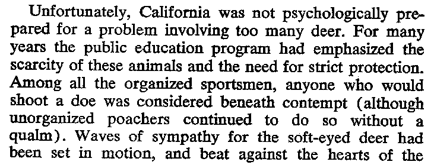

intellectual creative
- practical loss &
- intellectual loss &
- creative loss
information | Atomic bomb | Two Cultures | Intellectuals | Scientific Revolution | Rich & Poor
The scientists “They are self-impoverished.”
p. 20.
artists “They are impoverished too—perhaps more seriously, because they are vainer about it.”
p. 20.
“The two cultures were already dangerously separate sixty years ago (1900) …”
p. 22.
‘A spread of subjects (in 1905) which is now impossible.”
p. 22.
“There is only one way out of all this: it is, of course, by rethinking our education.”
p. 23
“Nearly everyone will agree that our school education is too specialised.”
p. 23.
Cambridge “But still the choice had to be a single one.”
p. 24.
“I think it is a disastrous process for the purpose of a living culture.”
p. 24.
“fatal, if we’re to perform practical tasks in the world.”
information | Atomic bomb | Two Cultures | Intellectuals | Scientific Revolution | Rich & Poor
Intellectuals as Natural Luddites
“The reasons for the existence of the two cultures are many, deep, and complex, some rooted in social histories, some in personal histories, and some in the inner dynamic of the different kinds of mental activity themselves.”
p. 27.
an inability to accept –much less understand—the industrial revolution.
p. 27.
“In both countries and indeed all over the West, the first wave of the industrial revolution crept on, without anyone noticing what was happening.”
p. 27-28.
“—by far the biggest transformation in society since the discovery of agriculture.”
p. 28.
“In fact, those two revolutions, the agricultural and the industrial-scientific, are the only qualitative changes that men have ever known.”
p. 28.
“Eric Ashby’s Technology and the Academics the best book on the subject of farsighted men were beginning to see, before the middle of the nineteenth century, that in order to go on producing wealth, the country needed to train some of its bright minds in science, particularly in applied science.”
p. 28.
information | Atomic bomb | Two Cultures | Intellectuals | Scientific Revolution | Rich & Poor
The Scientific Revolution
“Now I come to think of it, no American novelist of any class has ever been able to assume that his audience had it (a passing acquaintance with industry). He can assume, and only too often does, an acquaintance with a pseudo-feudal society, like the…Old South—but not with industrial society. Certainly an English novelist couldn't.”
p. 34.
"education"
‘Why aren’t we coping with the scientific revolution?”
“our education has gone wrong, and gone wrong in the same way.”
p. 37.
information | Atomic bomb | Two Cultures | Intellectuals | Scientific Revolution | Rich & Poor
Rich and Poor
“Fourthly and last, politicians, administrators, an entire community, who know enough science to have a sense of what the scientists are talking about.”
p. 41.
“educate ourselves to the limit.
p. 42.
“During all human history until this century, the rate of social change has been very slow. So slow, that it would pass unnoticed in one person’s lifetime. That is no longer so. The rate of change has increased so much that our imagination can’t keep up.”
p. 45.
The argument on page 45 is ominous in that the discussion of the rich and the poor, reveals that C. P. Snow thought that the split between rich and poor had to be remedied on a huge scale and quickly. He figured that by 2000 poverty would have to have been addressed effectively.
"Whatever else in the world we know survives to the year 2000, that won't.”
“the world can’t survive half rich and half poor,”
p. 45.
“few non-scientists really understand the scientific concept of acceleration.”
p. 45.
“more exactly, technology is the branch of human experience that people can learn with predictable results.”
p. 47.
One way out of the three-pronged menace of the 50’s was to promote a scientific revolution in the developing world.
p. 48.
“These men, whom we don’t yet possess, need to be trained not only in scientific but in human terms.”
p. 50.
“Education isn't the total solution to this problem: but without education the West can’t even begin to cope.
p. 51.
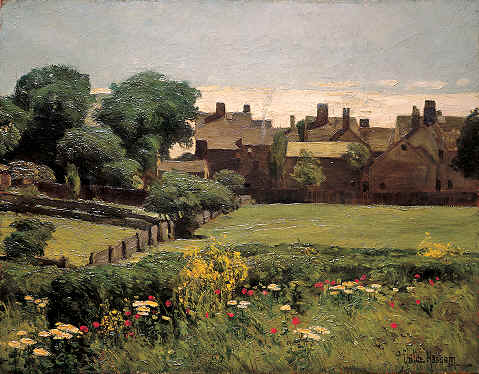 “Meanwhile, there are steps to be taken which aren’t outside the powers of reflective people.
“Meanwhile, there are steps to be taken which aren’t outside the powers of reflective people.
“closing the gap between our cultures is a necessity in the most abstract intellectual sense, as well as in the most practical. When those two senses have grown apart, then no society is going to be able to think with wisdom.”
pp. 51-52.
“This is one of the situations where the worst crime is innocence.”
p. 48.
“The danger is, we have been brought up to think as though we had all the time in the world. We have very little time. So little that I dare not guess at it.”
p. 52.
information | Atomic bomb | Two Cultures | Intellectuals | Scientific Revolution | Rich & Poor
Kenneth Boulding's, critique of The Two Cultures.
Snow's words | Snow's essay interpreted | The Two Culture's context | The Redux Essay | Siry essay
Interpreting the essay | Sample writing about Two Cultures
Unexpected outcomes of technical solutions.
![]()
Last Updated on October 14, 2007, and, Oct 7, 2008


